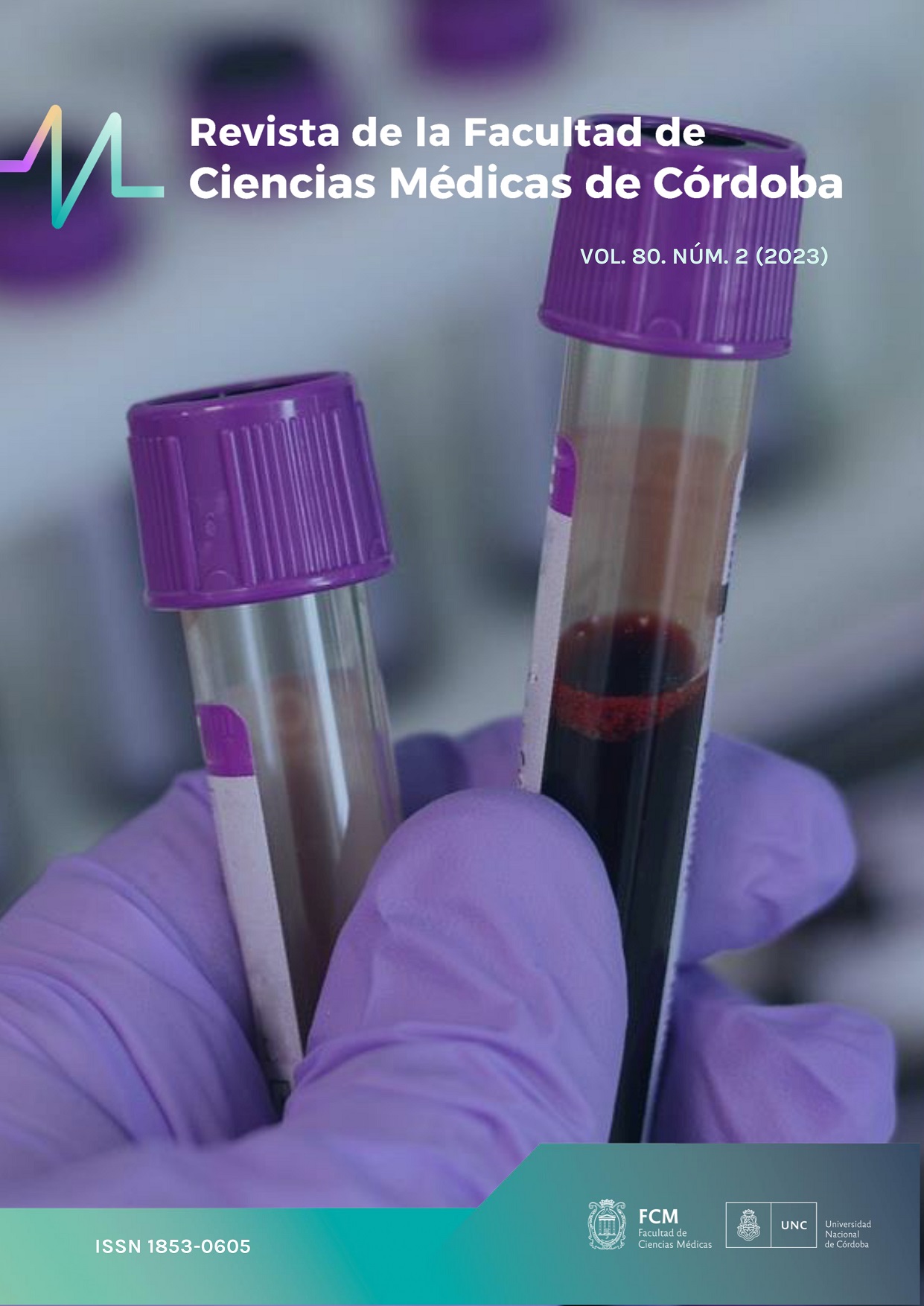Feeding patterns and nutritional status of children and adolescents with cerebral palsy in Córdoba, preliminary results.
Keywords:
Cerebral palsy, nutrition, food groups, childAbstract
Malnutrition in children and adolescents with cerebral palsy (CP) is multicausal and may be related to food intake. Objective: To describe the pattern of food intake and nutritional status in children and adolescents with CP in Córdoba.
Cross-sectional observational study. Children and adolescents aged 2 to 19 years with a confirmed diagnosis of CP were included. Sequential sampling in public and private rehabilitation centres. A food frequency questionnaire of 9 food and beverage groups was used, based on the literature and the ILSI Argentina visual guide of food portions and weights. Anthropometric measurements were taken to assess weight/age, height/age and BMI/age z-scores using WHO Anthro Plus software. Categorical variables were expressed as percentages [95% CI]. Normal data with mean and SD, non-normal data with median and ranges. Software used: MedCalc 12.5.0.0. Ethics committee approval was obtained and informed consent and assent were obtained from subjects.
41 participants were included. Mean age 13± 5 years. 58.5% (24 [42;73.6]) were male. According to P/E 61% (25 [44.5;75.8]) were underweight, T/E 80.5% (33 [65.1;91.1]) were underheight and 70.7% (29 [54.4;83.8]) were wasted. 80.5% (33 [65.1;91.1]) were malnourished. 68.3% (28 [51.9;81.9]) had exclusive oral feeding. The mean number of food groups consumed was 6.07 +3.2. 43.9% (18 [28.4;60.2]) consumed biscuits and 53.7% (22 [37.4;69.3]) simple pasta/rice, weekly. 24.4% (10 [12.3;40.3]) consumed bread several times a day. 73.2% (30 [57.0;85.8]) consumed some type of meat, with chicken predominating with 65.9% (27 [49.4;79.9]). Eggs were consumed by 56.1% (23 [39.7;71.5]) and only 10 children (24.4% [12.3;40.3]) consumed pulses on a weekly basis. Of the dairy group, 53.7% (22 [37.4;69.3]) consumed yoghurt on a weekly basis. 58.5% (24 [43.0;73.6]) incorporated starchy vegetables on a weekly basis. For fruits a daily intake was mentioned by 14.6% (6 [5.5;29.1]). Sugar was consumed daily by 46.3% (19 [30.9;62.8]), while oil was 39% (16 [24.1;55.4]) on a weekly basis.
A feeding pattern of limited food variety and inadequate intake frequency of essential nutrients is observed. This could be related to the high percentage of malnutrition. Further research is essential to determine timely nutritional interventions.
Downloads
References
.
Downloads
Published
Issue
Section
License
Copyright (c) 2024 Universidad Nacional de Córdoba

This work is licensed under a Creative Commons Attribution-NonCommercial 4.0 International License.
The generation of derivative works is allowed as long as it is not done for commercial purposes. The original work may not be used for commercial purposes.



